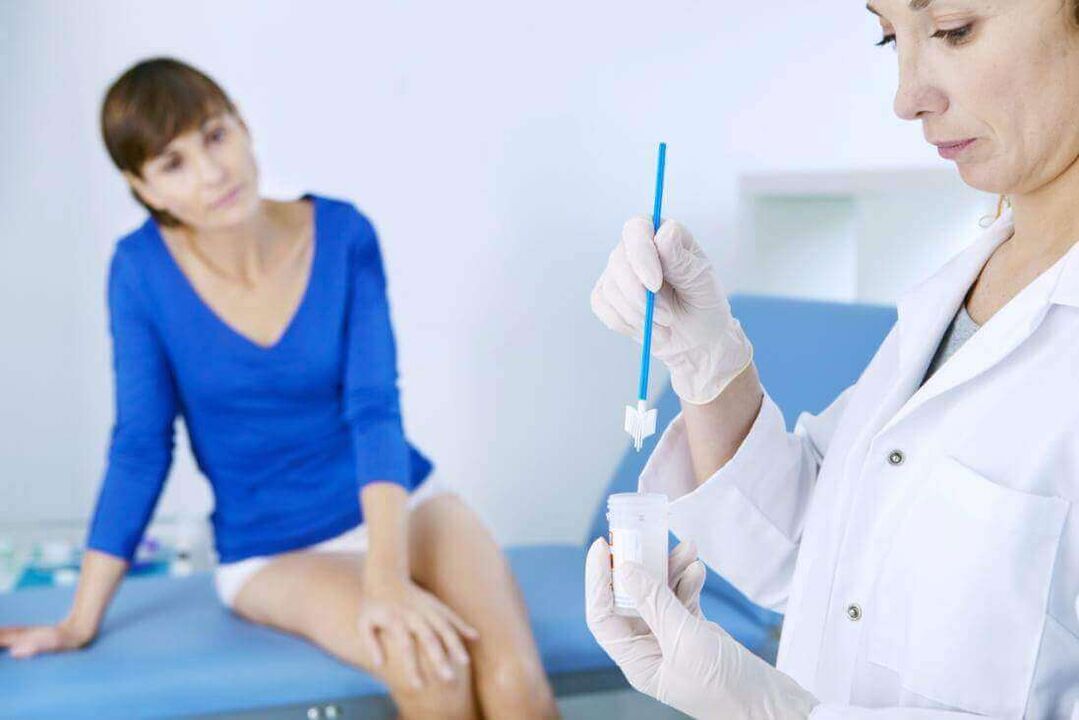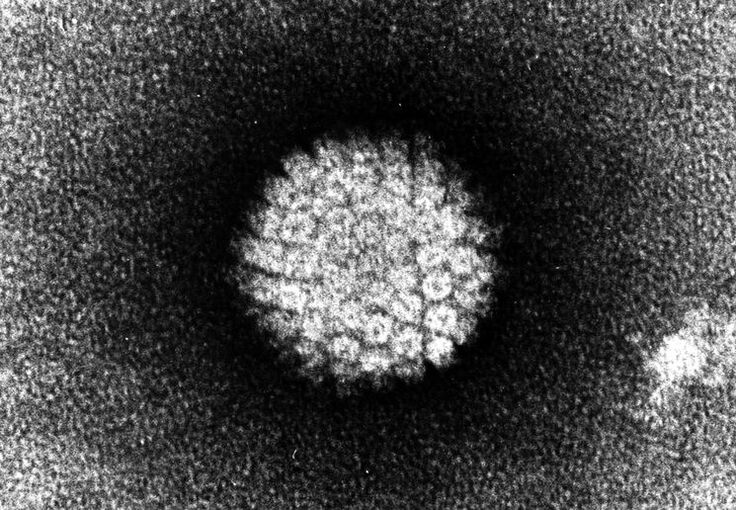
Papillomas are a problem that many people face. They can appear in different parts of the body, in some cases they are extremely painful, in some they do not cause discomfort. In any case, they become cosmetic flaws that bring a lot of anxiety. The excitement is not unfounded, since a virus that provokes the development of formations on the skin can lead to oncology.
Most of the world's population is a carrier of HPV. This does not mean that we are threatened by a massive epidemic of cancer and other diseases that can occur against the background of a weakened immune system and the appearance of warts, condylomas and other skin defects. The main task of the patient is to reduce the oncogenic risk. This is possible with regular visits to a dermatovenereologist, carrying out the necessary examinations and timely removal of formations.
Why do papillomas appear on the body?
There are many reasons that lead to the activation of the virus. The most common is a decrease in immunity, which causes uncontrolled cell reproduction. This is how innovations appear.
Also at risk are people who are promiscuous, often change partners, do not use reliable contraception. If a woman has HPV, she will pass it to her baby during childbirth.
The ways in which the virus enters the body can be different. This is the aforementioned unprotected intercourse, and skin-to-skin contact with the wearer. That is why it is important to follow the simplest hygiene rules: wash your hands after traveling by public transport, do not walk barefoot in swimming pools and saunas, where it is humid and warm - high humidity creates a favorable environment for infection. .

Human papillomavirus: what it is and how it is transmitted
HPV is a virus whose activity is manifested in a change in the nature of tissue growth. It enters the body mainly through the mucous membranes:
- mouth - during oral sex;
- genital organs - during unprotected sexual intercourse;
- rectum - during anal sex.
As long as a person's immunity is strong enough, the infection does not manifest itself; in this case, it is called latent. As soon as the defenses are reduced, it is activated, causing the cells to multiply. The result of unbalanced tissue growth is the appearance of benign neoplasms that threaten to become malignant.
The appearance of growths of different shapes and sizes on the skin is the main symptom of the human papillomavirus. In most cases, condylomas and other types of warts appear in those areas that are subject to mechanical stress, places characterized by increased sweating (armpits, palms). They can also occur on the genitals, around the anus.
Main routes of infection
- Sexual: occurs during sexual contact with a person who is a carrier of HPV. The virus can be contracted through oral and anal sex.
- Home: It is much less common, but it is still one of the main ones. Infection can be obtained in baths, swimming pools, saunas, showers. Penetrates through wounds, cracks and other skin damage.
- Transmission during childbirth: transmission of HPV from mother to child is the rarest case. But it is also one of the most dangerous due to the threat of damage to the respiratory tract.
- Autoinfection is also possible: it occurs when the infection is transferred from one part of the body to another (shaving the legs with a machine, removing unwanted hair).
Oncogenic viruses in the body do not indicate the development of cancer. However, they can cause the appearance of malignant neoplasms. The main factors of carcinogenesis are:
- Promiscuous sexual life, many couples, including those with lesions of the genitals with papillomas, condylomas.
- The presence of venereal and fungal diseases.
- Prolonged use of oral contraceptives, intrauterine device.
- Some gynecological diseases (endometriosis).
Are papillomas transmitted, why do they grow and are they dangerous? We have answered all these questions above. Should tumors be removed? Yes, for several reasons:
- These are cosmetic flaws, which, unlike moles, do not add charm, but cause great discomfort, both psychological and physical.
- Since growths most often occur in places subject to constant friction, mechanical stress from tight shoes, tight clothes, underwear, there is a high risk of damage. And this leads to the introduction of new infections.
- The accumulation of HPV causes a pathological change in the cellular genome, which can lead to oncology and other complications.
Earlier we told what papilloma is and why these neoplasms appear on the body. We recommend that you respond to all changes in skin condition. At the same time, you should not try to get rid of the problem yourself in order to avoid the risk of skin infection and the transformation of a benign wart into a malignant tumor. Modern medicine has effective non-surgical treatment methods that will help you forget about cosmetic defects forever and reduce the risk of developing oncology.
Varieties of papillomas: main types and their characteristics.

- Flat warts are usually round or oval. They practically do not protrude from the surface of the epidermis, similar to the burns obtained after contact with nettle leaves. Most of the time they occur during puberty. Places of localization: neck, hands, face, shins. The color is pinkish to yellowish. Often such formations itch, cause discomfort.
- Vulgar - the most common variety. Most often they appear on the feet, hands, rise above the skin by 3-10 mm. A whole colony of warts can arise, from the mother and daughter.
- Pointed - most often occurs in the anogenital area, they are small growths with a single nodule or many small formations. Color - pink or red. All neoplasms of different sizes. They are located directly on the skin or attached to it with a "leg", they cause itching and discomfort and require timely removal. Such warts are called warts and are transmitted through sexual contact.
- Filamentous - these are the same papillomas that we started talking about at the beginning of the article. Most often they appear in people over 35 years of age, their growth increases with age. This phenomenon has another name: acrocords. These are thread-like growths on the skin that look like a small nodule, gradually growing larger and becoming oval, becoming more and more elongated. This type of wart occurs in areas with thin skin that easily forms wrinkles, as well as in places characterized by excessive sweating - on the neck, in the armpits, under the breasts, in the groin, near the eyes, on the eyelids , etc. .
- Papillomas of the bladder and urethra - most neoplasms of this type appear in men. Symptoms: pain when urinating, pain in the lower abdomen, hematuria. Large growths can be removed by surgical excision. In this case, it is not the dermatovenereologist who deals with the diagnosis and treatment, but the urologist.
- The defeat of the larynx, trachea, oral cavity - in this case, the warts look like papillae, which gradually grow, leading to a decrease in the lumen of the airways. If the vocal cords are affected, speech impairment may occur. This type of manifestation of the virus is especially dangerous for babies, who can become infected during childbirth from a mother who transmitted the infection to the newborn.
We examined the types of papillomas and the reasons for their appearance on the body, found out why and where unsightly neoplasms appear, why they are dangerous. It remains to understand how to get rid of a cosmetic defect that can lead to serious complications.
diagnostic features
To find out which method will be more effective, consult a dermatovenerologist. He will prescribe an HPV test (PCR). The method used is one of the most informative. It will help identify the DNA of the infection in samples of various secretions, as well as determine the type of virus.
You may also need:
- Colposcopy.
- smear for cytology.
- Histological analysis.
What methods remove papillomas?
- Cauterization - is produced by special preparations, which include highly purified chemicals, active components that affect neoplasms.
- Liquid nitrogen removal - exposure of the affected skin area to low temperatures. There is an instant freezing of the damaged area, as a result of which the site of neoplasm formation loses its sensitivity - from pink or reddish to white. After a few weeks, the nitrogen treated area heals. The disadvantage of this method - the difficulty of determining the depth of exposure.
- Laser removal - in this case, papillomas are burned with a laser beam. After the session, a small wound remains on the skin, which must be treated regularly. It heals within a few weeks after cauterization. There is no rehabilitation period, since the regeneration processes occur without the intervention of specialists. At the same time, no scars or scars remain at the site of localization of warts. The disadvantage of this method is that it is not prescribed for various lesions of the epidermis, herpes and infectious diseases. Pregnancy is a contraindication for laser cauterization.
- Electrocoagulation is another method based on exposure to electrical current. High temperature provokes the destruction of papillomas. However, when skin is treated in this way, healthy areas are inevitably damaged, increasing healing time.
- Surgical removal - is prescribed if the neoplasms have grown to a large size and other methods are not effective. The doctor uses local anesthesia. After the operation, sutures are applied. They are removed a week after wart removal.
- Folk methods - most often from papillomas use celandine juice, vinegar, garlic. This is thought to help burn off the neoplasm. These methods are not safe and cannot reduce the risk of relapse. They often cause damage to healthy areas of skin surrounding the growth. We recommend that you do not engage in self-treatment, but consult a doctor in time; only he can determine which of the listed methods is more effective in dealing with the problem.
Often patients of a dermatovenereologist ask whether it is possible to permanently get rid of HPV, which causes unpleasant rashes. We remind you that the virus itself, which is in the human body and causes uncontrolled cell reproduction, cannot be eliminated: it remains in it and will manifest itself at times of weakening of the immune system, during hormonal disorders, during stress. As such, the treatment of the infection itself has not yet been invented. Only its external manifestations are removed: warts, papillomas and other types of warts.
The main task of an HPV carrier is to reduce the risk of relapse. For this you need:
- Observe the rules of personal hygiene, including intimate.
- Use condoms during sexual contact, avoid promiscuity.
- Maintain the body's defenses.
- Avoid direct contact with carriers of the infection.
Among the means whose action helps to eliminate papillomas and reduce the risk of recurrence is a drug that contains anti-inflammatory cytokines that block the synthesis of viral proteins. You can use this cream at home: it is applied once a day during the course of treatment prescribed by your doctor.
Filiform warts are a phenomenon that indicates the need for a complete examination of the body. Do not forget and go to the doctor on time. The delay increases the risk of developing cancer. Do not try to remove neoplasms on your own - folk methods are not very effective and cannot guarantee the complete disappearance of the accumulation. In addition, they can cause severe irritation of the skin, damage it, which will lead to secondary infection and aggravate the situation. Use only those methods advised by the specialist. In combination with preventive measures, they will help to avoid relapses and forget about the problem for many years.















